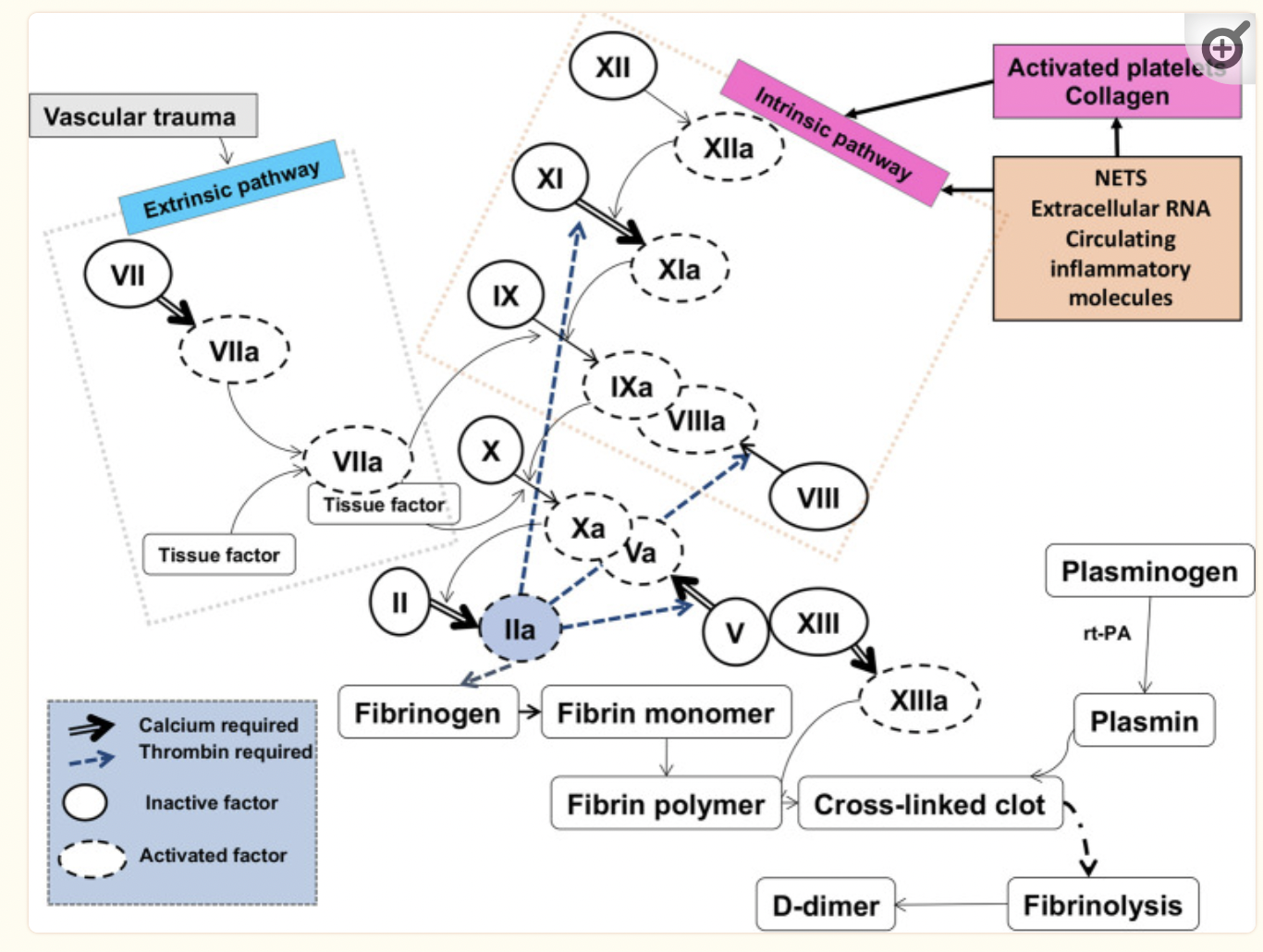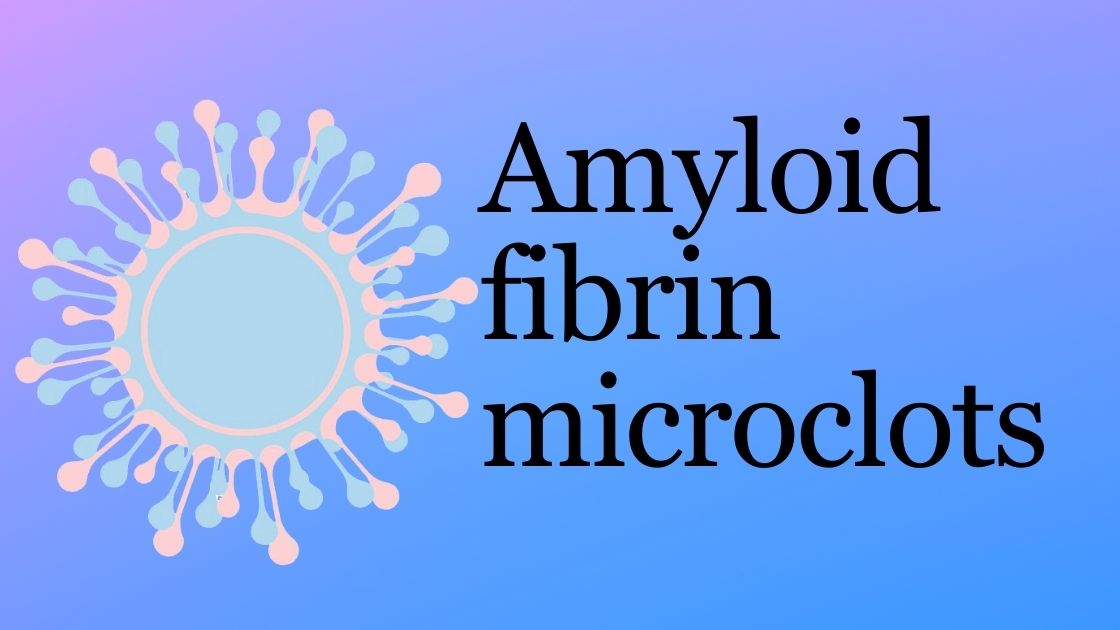A prevailing theory of long Covid pathogenesis is that clotting occurs in small vessels. An article published in Biochemical Journal in Feb. 2022 by clot researchers summarizes the topic well.
Highlights of this article:
It has been known for years that fibrinogen can clot into an amyloid or misfolded form of fibrin.
These amyloid fibrins are resistant to the usual ways that fibrin clots are broken down.
Amyloid is a term many people associate with amyloid-beta, the misfolded protein involved in Alzheimer’s disease. There are now over 50 types of proteins known to have an amyloid form.
The article explains that the typical clotting cascade involves thrombin activating fibrinogen into log fibrils that cross-link to form a blood clot. The process is an active one, and clots are constantly remodeling with fibrin being broken down.
Here’s a screenshot from the open-access article explaining the normal clotting cascade.

Amyloid forms of fibrin clump into dense deposits. Previously known triggers for inducing amyloid clots include lipopolysaccharide from bacteria, serum amyloid A, iron ions, estrogens, and lipoteichoic acid.
In people with long Covid, researchers are often finding microclots. These clots are amyloid in character.
Importantly, the S1 spike protein causes amyloid clots when added to normal plasma.
The small clots can block blood flow through microcapillaries. This cuts off oxygen to tissues. The clots are made mainly of fibrin, but researchers have also found the SARS-CoV-2 virus in the clots.
Hypoxia is the lack of oxygen — and not good. Hypoxia may explain many of the symptoms of long Covid and perhaps the vaccine lingering effects.
Reference:
Kell, Douglas B., et al. “A Central Role for Amyloid Fibrin Microclots in Long COVID/PASC: Origins and Therapeutic Implications.” Biochemical Journal, vol. 479, no. 4, Feb. 2022, pp. 537–59. PubMed Central, https://doi.org/10.1042/BCJ20220016.
https://www.ncbi.nlm.nih.gov/pmc/articles/PMC8883497/
